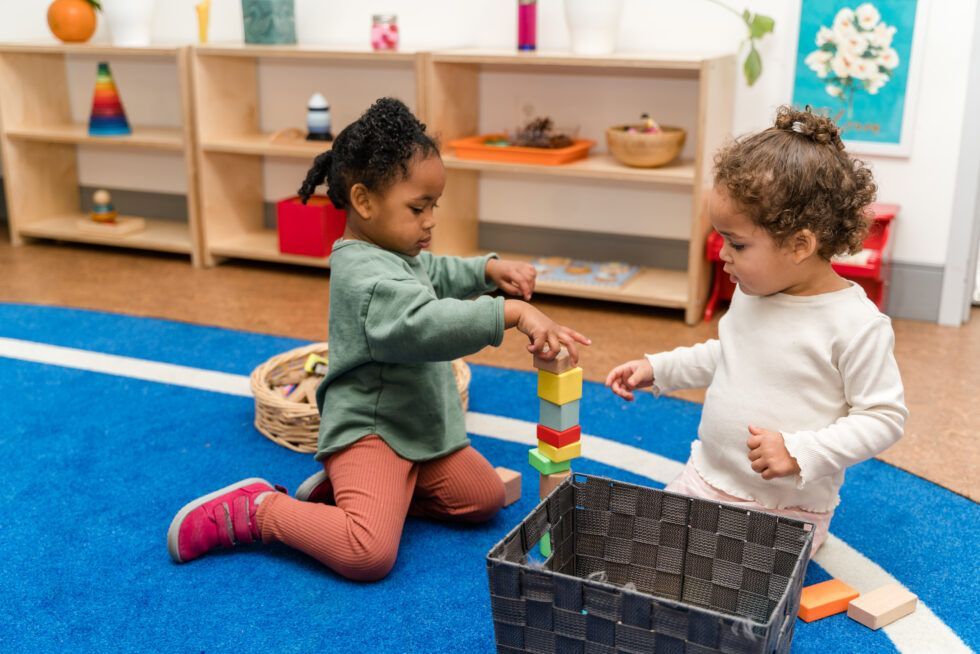Grace and Courtesy

As parents, we want our kids to get along. Yet sibling dynamics can vex even the best of us. We cringe at how much our children can hurt each other, then melt when we see them treating each other with kindness. Their fights can drive us crazy, causing us to worry about whether they will like each other as adults. Fortunately, we can implement strategies to prevent problems between siblings, set the stage for healthy interactions, and practice some techniques for managing conflict in the moment. One of the first steps is taking time to understand our children, ourselves, and the situation. Without taking time to assess these three aspects, we often end up interfering in sibling conflict, which may stop the fight in the moment but that may also inadvertently increase competition and misunderstanding. Check-In with Ourselves When conflicts arise, it helps to first check in with our own feelings. Having awareness of our mental and physical responses allows us to practice self-regulation. We can breathe in deeply through our nose and our mouth. We can pause before responding. We can even express our emotions: “I’m realizing that I’m not feeling very calm right now. Because I’m starting to feel upset, I’m going to take a minute to try to regain some control.” Our children don’t need us to get on the roller coaster! Describe and Empathize Another technique to help in the moment is to describe what we see and to empathize. When we describe what we see in a non-judgmental way, we help our children become aware of what they are doing. This allows them the opportunity to choose if they want to continue. The real key is to do this in a neutral way: “I’m noticing that both of you seem to really want to sit on the bean bag chair. Sometimes it can be hard to both want the same thing.” Examine the Hidden Beliefs When children exhibit behaviors, they have unspoken beliefs behind that behavior. To better understand our children and these beliefs, can start to reflect on any hidden messages. Some questions to consider include: Do our children feel like they need to win, be first, have an item, etc. to be significant in the family? Are they trying to determine their place in the family? Do they feel wronged in some way and want to cause hurt back to others? Do they feel they are being treated unfairly? Are they trying to fight back to have a sense of justice? Is fighting a way to assert power in the situation? We don’t need to have answers to the questions but rather recognize that our children might be operating based on some mistaken beliefs. It’s important to remember that what happens to us isn’t as important as the beliefs we have about what happens to us. Our children just want to belong and feel significant and might need some support in developing new beliefs to feel accepted and important. Shift the Beliefs One way to shift their thinking is to practice putting children in the same boat. When we take sides in an argument or conflict (for example, by reminding an older child to be kind to their younger sibling or assuming wrongdoing in some way), we reinforce competition or hard feelings between siblings. Instead, we can give our children a choice or hold both responsible. If something has been broken, both can be involved in making repairs or amends. If they are fighting in the car, we can pull over and explain that we’ll be happy to get going again when they have resolved their conflict or have decided to stop arguing. If tattling is a regular occurrence, we can empathize and wonder how they will solve the problem together. We can also make sure we aren’t setting up situations that cultivate jealousy or competition by forcing sharing or putting one child’s needs before another’s. Provide Special Time Another way to help our children feel belonging and significance is to schedule special time. Our children need our undivided attention, yet so often as parents, we are pulled in so many directions. One way to address this is to commit to having five to ten minutes of one-on-one time with each child. Let your children know that this is time that you will be with them 100% and that they get to choose what you both do together during that time. Even if it is that activity that you just can’t stand, remember it is only for a short duration! Use a timer and stay committed to having the time each day. This undivided attention helps children feel secure and connected. The result? They are more cooperative with us and each other. New Skills Ultimately helping our children navigate sibling dynamics involves teaching new skills. We can help our children learn how to express themselves kindly and firmly, perhaps even practicing how to share concerns during family meetings. We can involve our children in finding solutions through problem-solving strategies. We can emphasize the value of different perspectives and needs by appreciating each child’s unique qualities and building gratitude into our routines. What we model and promote in our families helps set the stage for how our children navigate not only sibling relationships but their interactions in the world. If you’d like to learn more about how we cultivate respectful, cooperative relationships and help children learn how to resolve differences with respect and kindness, come visit our school!

In Montessori, we emphasize two words on a pretty regular basis: grace and courtesy. But what does grace and courtesy really mean? How are they an essential part of Montessori classrooms? And what role do they play in supporting the development of social relationships? What is Grace? What is Courtesy? Let’s first isolate each word. Google’s Oxford Languages defines “grace” in two parts: 1. simple elegance or refinement of movement, and 2. courteous goodwill. Courtesy is defined simply as: the showing of politeness in one’s attitude and behavior toward others. Stated another way, grace and courtesy comprise how we move through the space around us showing respect for ourselves and others. Grace & Courtesy Lessons In our toddler and primary classrooms, grace and courtesy are considered to be part of practical life learning and we devote significant time to grace and courtesy lessons. For example, the adults give explicit instruction on how to walk around someone’s work on the rug, how to wait your turn, how to offer help, how to tuck a chair under the table, or how to introduce oneself. These lessons are offered one-on-one or in small groups and we often use role playing as a technique for exploring the skills. We are very careful about how we introduce grace and courtesy to children. If we see something that needs to be addressed, we try to avoid confronting the child in the moment and we never offer grace and courtesy lessons as a form of punishment or correction. We are careful about this because children are often embarrassed when corrected by adults on the spot. When this happens, they can feel disrespected and not safe, and thus much less likely to perform the act on their own accord. In the Older Years As children enter their elementary and adolescent years, our approach shifts slightly. Elementary-age children are more focused on their social interactions and are learning how to navigate the ups and downs of friendships. As such, much of the grace and courtesy work at this level provides children with tools for communicating directly and respectfully, sharing perspectives thoughtfully, and even being discreet about something potentially embarrassing. In addition, they are learning how to interact with the broader community as they arrange visits or interviews, conduct themselves according to the norms of different communities, and explore how to be a host or be a guest. The Goal The goal in Montessori education is that these acts of grace and courtesy aren’t rigid expectations, like insisting that children say please and thank you. Rather, they become part of how children want to be and interact. Dr. Montessori is quoted as saying: “…the essential thing is that [the child] should know how to perform these actions of courtesy when his little heart prompts him to do so, as part of a social life which develops naturally from moment to moment.” Like all other exercises in Montessori prepared environments, we offer opportunities to regularly practice and repeat grace and courtesy skills. Because these experiences are part of the normal functioning of the day, they provide a respectful way for young people to learn expectations and for adults to provide scaffolding and assistance for social skills. The Results In time, as we offer these grace and courtesy opportunities and give children a safe place to practice, our young people eventually perform these skills independently. When you visit our school, you’re likely to see two young children sitting together, the older one showing the other how to put on their shoes. Or perhaps if you observe in a primary classroom, you might see a child patiently waiting with their hand on their own shoulder, our silent signal that we need someone’s attention, until a teacher is available to help them. Our children bring a sad classmate a tissue or rush to assist when someone has a spill. They tuck their chairs under tables so others don’t trip over them. They carefully place a tray upon a table. They greet each other and adults in the hallways. They hold the door open when they see someone coming their way. In the process, Montessori children move beyond the basic niceties and think deeply about their impact on those around them. We’d love to show you this in action! Schedule a tour to see the ways that grace and courtesy help children recognize themselves as caring individuals within a supportive community.
